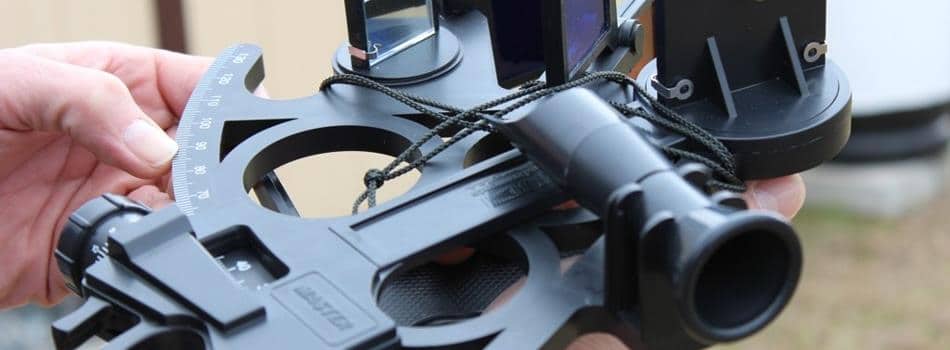Course Summary:
This course provides classroom training in celestial navigation techniques and is intended for individuals who wish to obtain an “Upon Oceans” endorsement on their U.S. Coast Guard License or satisfy the course requirement for OICNW.

This course provides classroom training in celestial navigation techniques and is intended for individuals who wish to obtain an “Upon Oceans” endorsement on their U.S. Coast Guard License or satisfy the course requirement for OICNW.
10 Days (90 Hours)
12 Students
Pre-Registration is Required
$2000
This course is for Deck Officers increasing the scope of an endorsement from near coastal to oceans or to meet the requirements as outlined in the STCW Code, as amended. Therefore, the student must have a Near Coastal endorsement or have applied to the NMC. Students are expected to be able to read, speak and communicate effectively in English. Comprehend information after reading preparatory lessons in order to complete sight reductions using a standard strip form. Plot positions and determine deduced reckoning information. Must be able to process functions using a scientific calculator, determine time and positions using the decimal system. Students must meet the citizenship requirements listed in 46 CFR 10.221.
This course provides classroom training in celestial navigation techniques and is intended for individuals who wish to obtain an “Upon Oceans” endorsement on their U.S. Coast Guard License or satisfy the training requirement for OICNW. The course is of value to others who have a desire to learn celestial navigation techniques. All materials required for the course are supplied as part of your course fee.
Any applicant who has successfully completed our Oceans Navigation/Celestial Navigation (500/1600 GRT) (CMTIVA-107) course will satisfy:
⦁ The Oceans Navigation examination requirements of:
⦁ Navigation General: Oceans; AND
⦁ Navigation Problems: Oceans
For increasing the scope of an endorsement from near coastal to oceans for the following National Deck Officer endorsements, PROVIDED the course was completed within one
year of application:
⦁ Second or Third Mate of self-propelled vessels of unlimited tonnage;
⦁ Master or Mate of self-propelled vessels of less than 1600 GRT;
⦁ Master or Mate of self-propelled vessels of less than 500 GRT;
⦁ Master or Mate of self-propelled vessels of less than 200 GRT;
⦁ Towing Vessel Endorsements;
⦁ Master or Mate of Uninspected Fishing Industry Vessels;
⦁ Master (OSV), Chief Mate (OSV), or Mate (OSV) of offshore supply vessels; AND
⦁ The Celestial Navigation training requirements of 46 CFR 11.309(a)(4)(viii) for an STCW endorsement as Officer in Charge of a Navigational Watch on vessels of 500 or
more gross tonnage (ITC); AND
⦁ The Celestial Navigation standards of competence required by 46 CFR 11.309(a)(3) and 11.319(a)(3); STCW Code Section A-II/1 and Table A-II/1, as amended 2010,
meeting the National Assessment Guidelines from NVICs 12-14(Ch-6) and 02-18(Ch-4)
The course satisfies applicable requirements, and the following approval is granted subject to the conditions specified below and in Enclosure (1):
Tasks 1.1.A, 1.1.B, 1.1.C, 1.1.D, 1.1.E, and 1.1.F; AND
⦁ The Celestial Navigation standards of competence required by 46 CFR 11.305(a)(2), 11.307(a)(2), 11.311(a)(2), 11.313(a)(2), and 11.315(a)(2); STCW Code Section A-II/2
and Table A-II/2, as amended 2010, meeting the National Assessment Guidelines from NVICs 10-14(Ch-4), 11-14(Ch-4), and 03-18(Ch-3) Tasks 1.2.B, 1.2.C, 2.1.B, and 2.1.C.
This course does not satisfy the Terrestrial Navigation or Electronic Navigation training requirements of 46 CFR 11.309(a)(4)(viii).
Applicants who have successfully completed our course need not present completed “Task Control Sheets” for these assessments in application for STCW certification.
*** One morning or evening star observation is required. We will adjust course hours as necessary to accommodate star time during that part of the year.
*** Numerous assessments could be affected by current weather conditions / cloud cover during the course. Every attempt will be made to complete all assessments while the student is enrolled in the course.
If for any reason we are not able to complete any assessments due to weather / cloud cover, you will be offered an attempt to complete them during our next course offering.
The course covers the following topics:
The student will be administered a 15 question Navigation Problems exam with a minimum score of 80% and a 70 question Navigation General exam with a minimum score of 70%.
Register for upcoming classes:
Copyright © 2017 Chesapeake Marine Training Institute
Site Design and Hosting by Franktronics, Inc
https://dobust.com/slot-gacor/
https://bizlifetime.com/slot-gacor-gampang-menang/
https://rajasthankiawaaz.com/slot-gacor/
https://epusenergy.com/slot-gacor/
https://anaskopisi.gr/slot-gacor/
https://callets.de/slot-gacor/
https://printerdriverspack.com/situs-judi-slot-terbaik-dan-terpercaya-no-1/
https://www.sasrugby.com/slot-gacor/
https://philmarriott.net/slot-gacor/
https://liftfoilsaustralia.com/slot-gacor/
https://www.ossmediterraneo.com/slot-gacor/
https://www.247acemedia.com/wp-content/slot-gacor-terbaru/
https://mwe100.com/slot-gacor-terbaru/
http://empregosecursos.com.br/situs-judi-slot-online-gampang-menang/